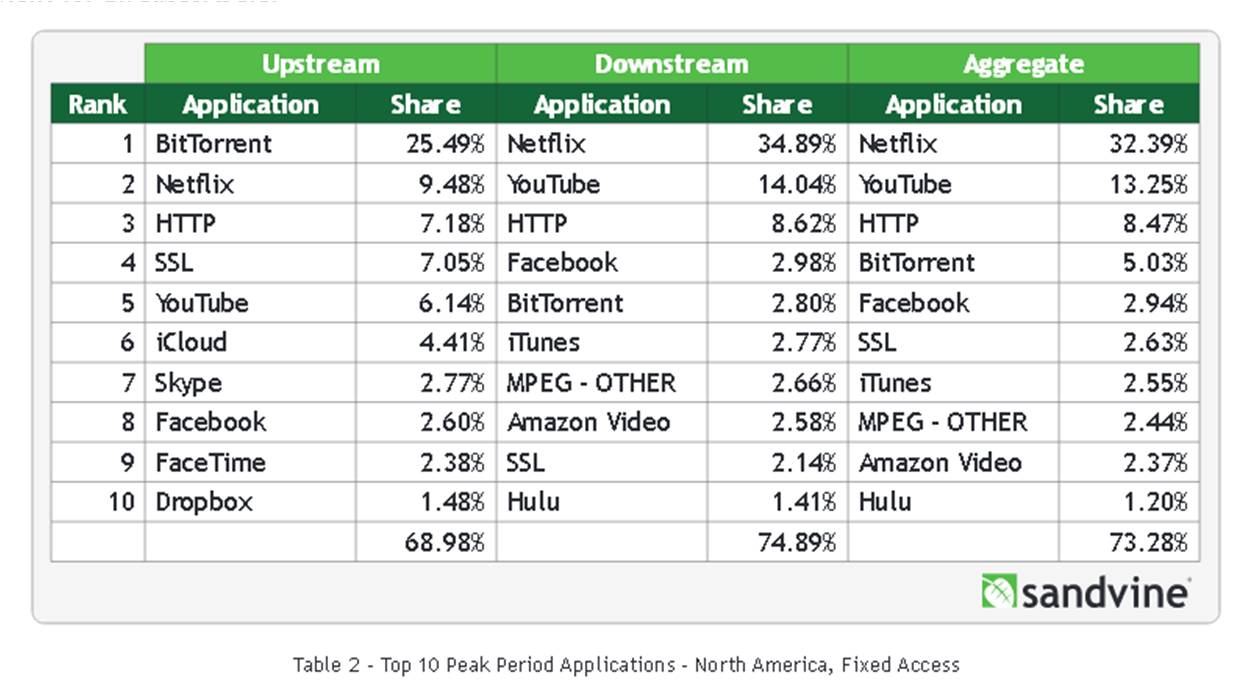TV – Sandvine, the Canadian provider of an internet network policy control platform, has released data on who is using all this available broadband bandwidth and how much goes to video on demand.
As discussed some time ago by Peter Putnam in his article “Broadband: It’s All About The Pipes“, broadband internet has been changing the direction of the home entertainment industry for quite some time and this trend seems to continue.
As Sandvine reports regularly on the top applications using bandwidth in fixed as well as in mobile networks, the results are not overly surprising, even though some comments are remarkable.
The top application for downstream traffic during peak periods in North America in fixed networks, according to the latest report which measured the monthly usage of broadband in the second half of 2014, shows Netflix being the master of the internet traffic. Amazon Video is also on the map and while still small, the service is now the number two OTT service in North America and is expected to keep growing at around 10% year on year.

Sandvine speculates how this will change with HBOGO holding currently around 1% of traffic during peak periods. iTunes holds 2.77% which includes audio and video.
On the mobile side this picture changes considerably as YouTube now has the lead, with Netflix holding only 4.51% of the mobile traffic during peak periods.

Overall, mobile networks serve many more social networks like Facebook and Instagram. The ruler of this world is still YouTube, but it is only on the same level as Facebook. As a summary one could see that mobile devices are definitely using streaming services differently on fixed networks compared to mobile ones. Video streaming on mobile devices exists and if we include YouTube as a content source, it makes up almost 25% of the mobile network traffic during peak periods.
When we look at worldwide internet penetration in various areas of the world, we see that North America is by far the leading region. With this in mind and with internet access growing in higher population regions like Asia and Africa, the future of home entertainment may very well be driven by streaming content.

Even Europe still has some growth potential and with a highly developed broadcast system may be susceptible to changes in the TV industry similar to the US and Canada. Asia and Africa, which make up over 70% of the world population are still behind the average internet penetration rate of almost 40%. All in all, internet TV seems to be ready for some significant growth in the coming decade. – Norbert Hildebrand

